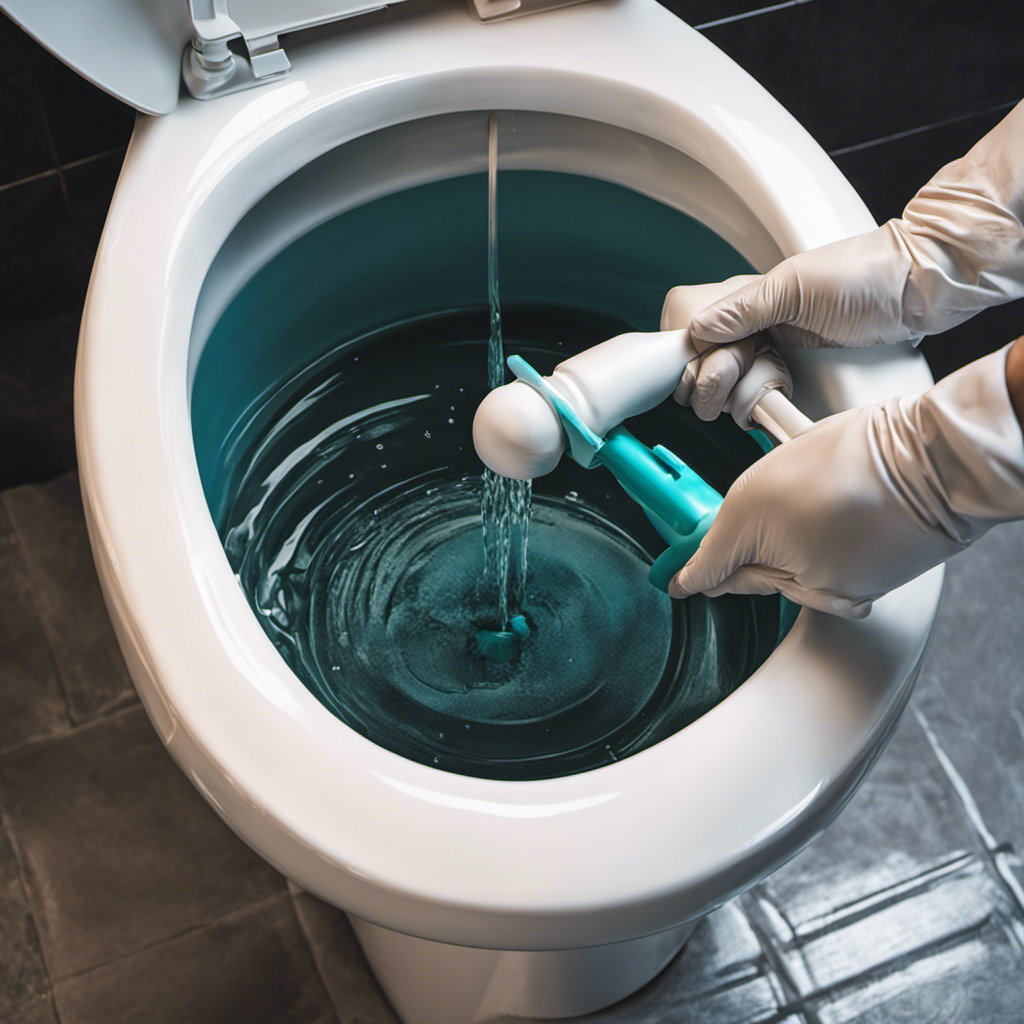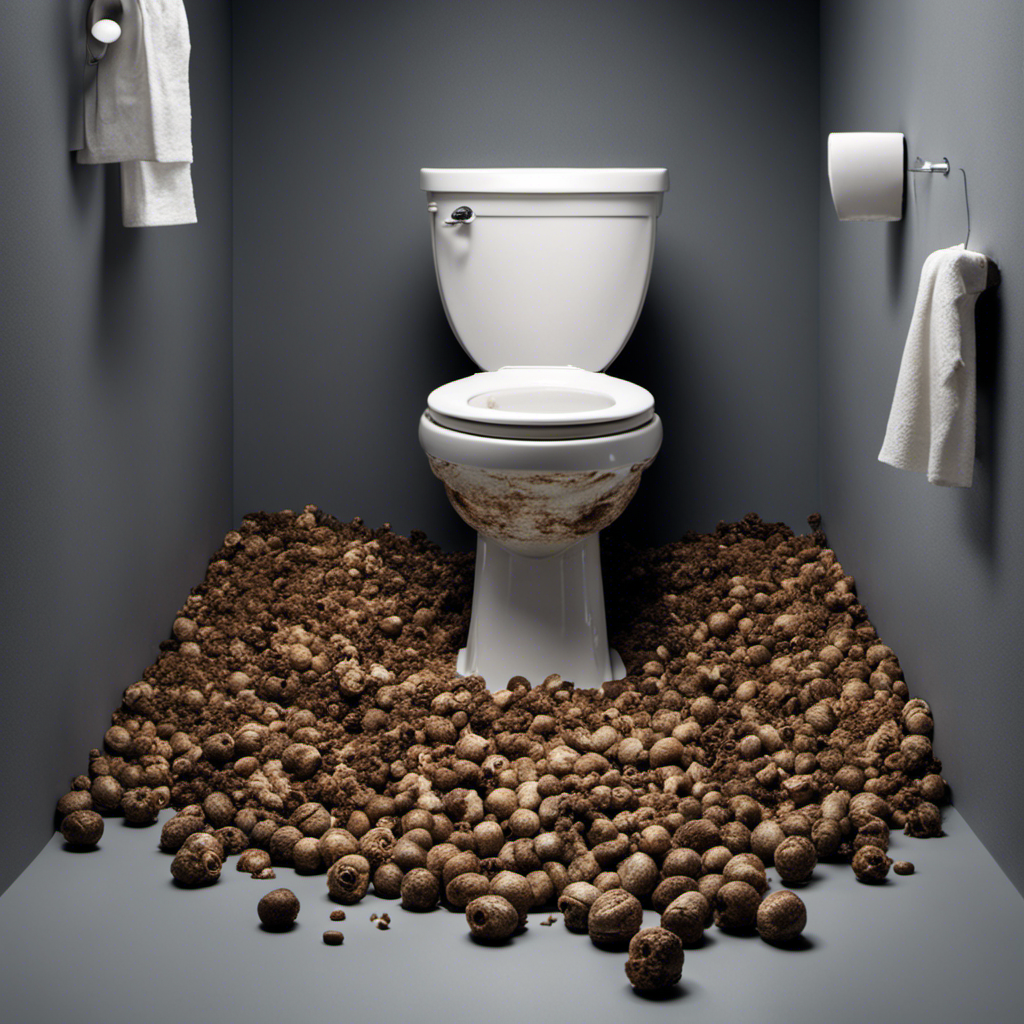I’ve always believed that a leaking toilet is like a secret thief, silently stealing our precious water and money without us even realizing it.
But fear not, for in this article, I will guide you through the process of detecting and identifying a toilet leak.
We’ll explore the common signs, step-by-step methods, and even DIY techniques to help you become a master of leak detection.
Get ready to put an end to those sneaky toilet leaks once and for all!
Key Takeaways
- Continuously running toilet
- Water pooling around the base
- Listen for the sound of running water when the toilet is not in use
- Regular maintenance and inspections can prevent leaks
Common Signs of a Toilet Leak
You should look out for common signs of a toilet leak, such as a continuously running toilet or water pooling around the base. These signs indicate that there might be a problem with your toilet and it requires immediate attention.
Toilets can leak due to various reasons such as a faulty flapper valve, worn-out gaskets, or a cracked tank or bowl. If left unchecked, these leaks can lead to water wastage and higher water bills. Toilet leak repair is essential to prevent further damage and ensure efficient water usage.
There are several toilet leak detection methods, including dye tablets, food coloring, or even listening for hissing sounds. By identifying and addressing these signs of a toilet leak, you can avoid potential water damage and save money on your utility bills.
Now, let’s move on to how to check for water leaks in your toilet.
How to Check for Water Leaks in Your Toilet
Start by checking if there’s water leaking from your toilet. This is an important step in determining if there’s a need for toilet leak repair. To ensure accuracy, follow these steps:
- Look for water pooling around the base of the toilet.
- Observe if there are any wet spots on the floor near the toilet.
- Listen for the sound of running water when the toilet is not in use.
If you notice any of these signs, it’s crucial to address the issue promptly to prevent further damage.
While some minor leaks can be fixed with DIY methods, complex leaks may require professional plumbing services. Hiring experts in toilet leak repair ensures a thorough inspection and effective solutions.
Don’t hesitate to reach out for professional assistance to avoid costly repairs in the future.
Steps to Detect a Leaking Toilet
One way to detect a leaking toilet is by observing for wet spots on the floor near it. This could indicate that water is leaking from the base of the toilet or from the water supply line. Toilet leaks can be caused by various factors, such as worn-out flappers, damaged seals, or loose connections.
To prevent toilet leaks, regular maintenance is necessary. This includes checking the toilet for any signs of leaks, such as water pooling around the base, and ensuring that all connections are tight and secure. Additionally, it is important to replace any worn-out parts, such as flappers or seals, as soon as they show signs of wear and tear.
Signs Your Toilet May Be Leaking Water
If water is pooling around the base of your toilet, it’s a sign that there may be a leak present. This is just one of the many indicators that your toilet might be leaking water. Here are a few more signs to watch out for:
- Water stains on the floor around the toilet
- Constantly running toilet
- Unexplained increase in water bills
Toilet leaks can be a nuisance, but they can also waste a significant amount of water and money if left undetected. To prevent toilet leaks, it’s important to ensure that all the components are properly installed and functioning correctly. Regular maintenance and inspections can help identify any potential leaks early on. If you suspect a leak but can’t locate the source, it may be wise to seek professional toilet leak detection services to accurately pinpoint the problem.
Transitioning into the subsequent section, let’s explore some DIY methods to identify toilet leaks.
DIY Methods to Identify Toilet Leaks
To identify toilet leaks on your own, you can start by checking the water level in the tank and looking for any signs of discoloration or movement in the bowl. If the water level is constantly rising or falling, it could indicate a leak.
Another way to detect a toilet leak is by placing a few drops of food coloring in the tank and waiting for about 15 minutes without flushing. If the water in the bowl turns colored, it means there is a leak between the tank and the bowl.
To repair a toilet leak, you may need to replace faulty components such as the flapper valve or the fill valve. It is important to fix toilet leaks promptly to prevent water wastage and potential damage to your bathroom.
Frequently Asked Questions
How Much Water Is Typically Lost From a Leaking Toilet?
Typically, a leaking toilet can lose a significant amount of water, resulting in increased water bills and potential damage to your home. It’s important to address the issue promptly to avoid costly toilet repair costs. DIY toilet leak detection methods can help identify the problem.
Can a Leaking Toilet Cause Damage to the Bathroom Floor?
Yes, a leaking toilet can cause significant damage to the bathroom floor. Signs of water damage include soft spots, discoloration, and warping. It’s important to address these issues promptly and follow proper toilet repair tips.
Are There Any Health Risks Associated With a Leaking Toilet?
Leaking toilets can pose health risks due to the growth of mold and bacteria. To prevent this, regularly inspect your toilet for leaks and promptly fix them. Proper maintenance is key to a healthy bathroom.
Can a Leaking Toilet Increase Water Bills Significantly?
Yes, a leaking toilet can significantly increase water bills. The increased water consumption caused by the leakage can lead to higher water usage charges and result in financial implications for the homeowner.
How Long Does It Typically Take to Repair a Leaking Toilet?
Typically, repairing a leaking toilet can take anywhere from a few hours to a full day, depending on the extent of the damage and the complexity of the repair. Common causes include worn-out seals and faulty fill valves.
Conclusion
So there you have it, a detailed guide on how to tell if your toilet is leaking.
By paying attention to common signs such as water stains, a constantly running toilet, or a musty smell, you can quickly identify if there is a leak.
By following the steps to check for leaks, like using food coloring in the tank, you can confirm if your toilet is indeed leaking.
While some may argue that hiring a professional plumber is the best solution, these DIY methods can save you time and money in the long run.










